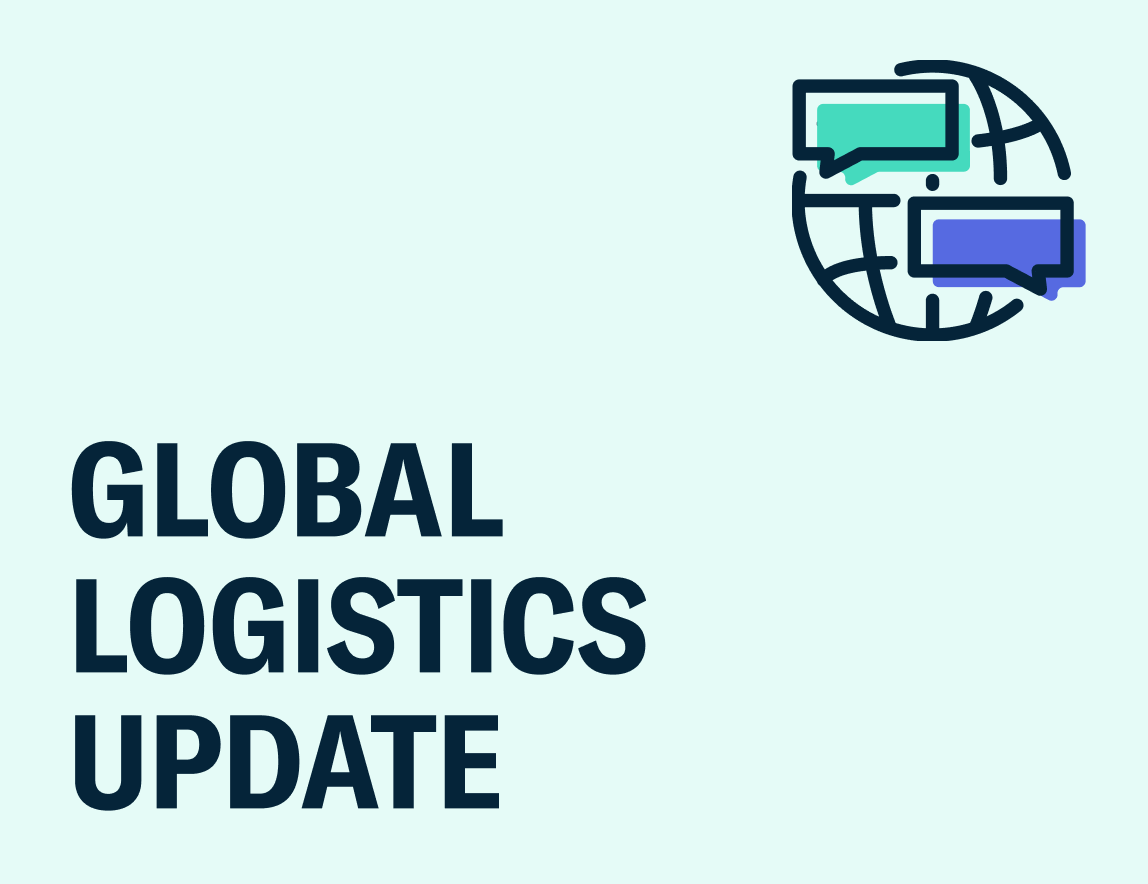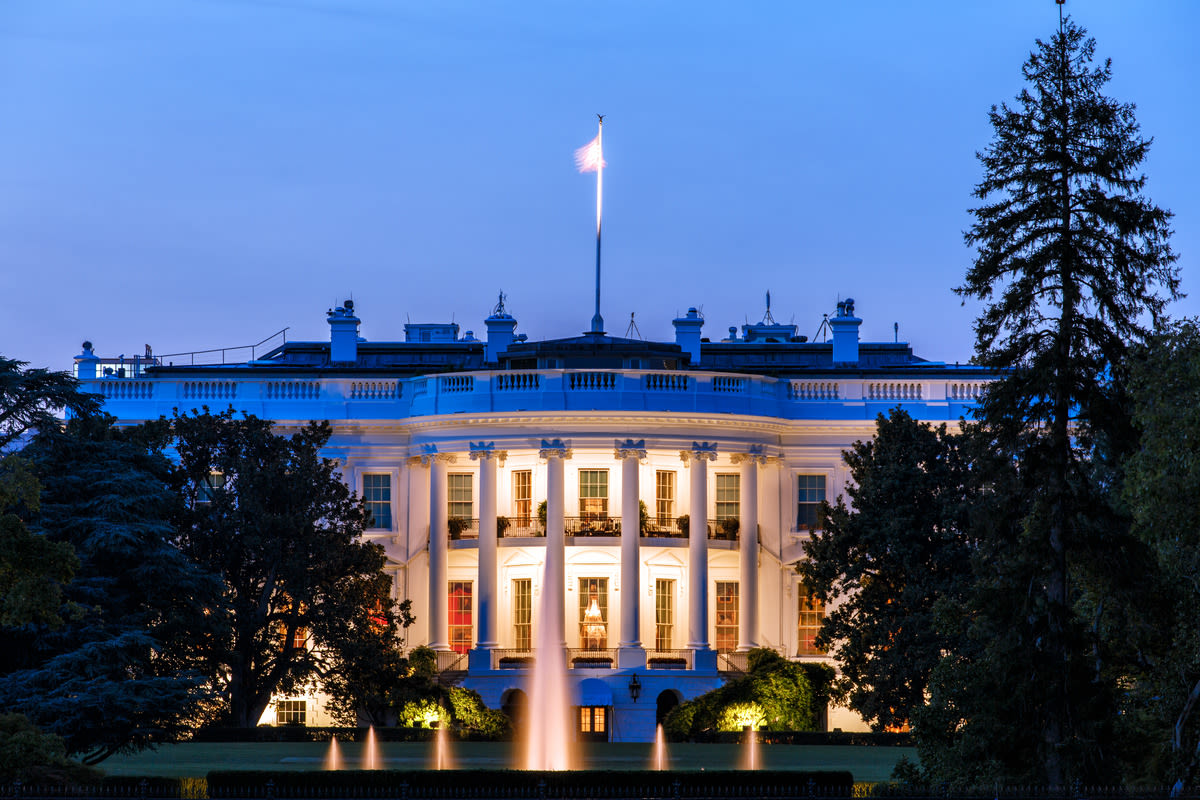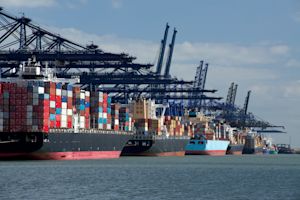
Global Logistics Update
U.S. Announces New Trade Frameworks and Reciprocal Tariff Exemptions; Overcapacity Persists on TPEB
Updates from the global supply chain and logistics world | November 20, 2025
Global Logistics Update: November 20, 2025

November 20, 2025
Trends to Watch
Talking Tariffs
- Ecommerce Brands Face End of EU Duty Exemption for Low-Value Goods: On November 13, the EU announced that it would soon eliminate its duty-free exemption for goods valued under €150, with plans to introduce a temporary transitional solution as soon as 2026 and a longer-term solution in 2028. The EU’s announcement comes just months after the U.S. officially eliminated the de minimis exemption, its own duty-free exemption for low-value goods.
- Beyond duties, businesses may see other new costs. Earlier this year, the EU proposed a €2 handling fee for low-value parcels shipped directly to consumers from outside the bloc, and an alternative fee of €0.50 for parcels first routed to EU warehouses. Meanwhile, last month, a number of individual EU member states also introduced proposals to levy customs fees on low-value parcels.
- The EU’s longer-term solution for eliminating the €150 duty-free threshold will follow the planned 2028 launch of the proposed EU Customs Data Hub, a centralized platform for data exchange and risk management. Upon the platform’s launch, the EU intends to designate most businesses importing low-value goods as “deemed importers.” The deemed importer will be responsible for collecting and remitting duties, value-added tax (VAT), and compliance-related data; ensuring that imports meet relevant EU requirements; and documenting all EU sales in the Customs Data Hub.
- The EU has also proposed an expanded Import One-Stop Shop (IOSS), a system that streamlines the declaration and payment of VAT on EU goods valued under €150. Under the existing IOSS scheme, VAT is collected at the point of sale rather than at the border, enabling goods to undergo faster customs clearance. Per the EU’s proposed changes, the expanded IOSS will apply to all goods, regardless of their value.
- Check out our blog to learn more about upcoming changes, timelines, and impacts on businesses.
- Select Agricultural Imports Exempted from Reciprocal Tariffs: On November 14, President Trump issued an executive order exempting certain agricultural goods from reciprocal tariffs. These products include coffee, bananas and other fruits, animal fertilizers and other fertilizer products, and more. These exemptions apply retroactively to goods entered or withdrawn for consumption on or after November 13, 2025.
- U.S. Announces Trade Framework with Switzerland and Liechtenstein: On November 14, the White House published a framework for a trade deal with Switzerland and Liechtenstein. The timeline for implementing a finalized trade agreement remains unclear.
- Per the trade framework, goods from Switzerland or Liechtenstein will be subject to the greater of either the applicable U.S. Most Favored Nation (MFN) rate or a 15% rate composed of the MFN tariff and a reciprocal tariff.
- Pharmaceuticals and semiconductors originating from these nations will be subject to a maximum tariff of 15%, when those Section 232 cases are live.
- Switzerland and Liechtenstein will remove certain non-tariff barriers to U.S. exports.
- U.S. Announces Trade Framework with Latin American Nations: On November 13, the White House published trade frameworks with Argentina, Guatemala, Ecuador, and El Salvador. Trade agreements with these nations are expected to be finalized in the coming weeks.
- Under these trade frameworks, the existing U.S. tariff rate on all four nations will remain in place. However, the U.S. intends to eliminate reciprocal tariffs on certain goods that “cannot be grown, mined, or naturally produced in the United States in sufficient quantities,” and on select products originating under the Dominican Republic-Central America Free Trade Agreement (CAFTA-DR).
- All four nations will remove certain non-tariff barriers to U.S. agricultural products, digital services, pharmaceuticals, and more.
- Other Recent Developments:
- Earlier this month, the U.S. Supreme Court heard oral arguments on the legality of the Trump administration’s IEEPA tariffs. The Court will likely take at least a few months to reach a decision; in the meantime, IEEPA tariffs will remain in effect. If the Supreme Court rules against the Trump administration’s tariffs, U.S. Customs and Border Protection (CBP) would halt duty collection immediately while refunding duty payments in some way. In such a case, the Trump administration could potentially turn to other statutes—including Sections 301, 232, 122, and 338—to re-implement tariffs or introduce new ones. If the Supreme Court upholds the tariffs, on the other hand, the case could potentially return to the lower courts for another review of certain aspects of the case.
- Last week, the U.S. and China began implementing provisions agreed upon during President Trump’s and President Xi’s meeting on October 30. The U.S. has reduced its “fentanyl” tariff on China from 20% to 10%; China has announced a one-year delay in the implementation of certain rare earth export controls; the U.S. and China have suspended reciprocal port fees for one year; and more.
- On November 9, President Trump announced plans to issue a $2,000 tariff dividend to each American, excluding high earners. President Trump has yet to specify exactly which Americans would be eligible for the payment, and how and when it would be paid out.
- Find the latest tariff and trade developments on our live blog.
Calculate your tariff and landed cost impacts in real time with the Flexport Tariff Simulator.
Ocean
TRANS-PACIFIC EASTBOUND (TPEB)
- Capacity and Demand:
- A moderate increase in capacity is forecast for next month, with levels anticipated to exceed 90% for December.
- Demand remains stable and flat. The market did not experience a volume surge in response to the previously anticipated November 1 tariff hike, which suggests a “wait-and-see” approach from cargo owners and the absence of a significant demand-driven “peak.”
- Freight Rates:
- November rates continue to drop after the previous General Rate Increase (GRI) was fully eliminated. The Shanghai Containerized Freight Index (SCFI) has seen a double-digit percentage decrease in the last three weeks for both U.S. West and East Coasts.
- However, carriers have announced a December 1 GRI. This is a commercial decision by ocean carriers to attempt to slow or arrest the rate decreases seen in November and bring prices back in line with operating expenses.
- The Peak Season Surcharge (PSS) has been further postponed until December 15. Given the general softening of November rates and ongoing overcapacity vs. flat demand, it appears unlikely that a PSS or a high December GRI will fully hold, and instead may be further pushed out.
FAR EAST WESTBOUND (FEWB)
- Capacity and Demand:
- Active capacity management: in November, deployed capacity on the trade was reduced to 1 million TEUs, down from 1.2 million TEUs in October. Carriers are also implementing blank sailings, withdrawing 7% of voyages scheduled between Weeks 47 and 51.
- Overall booking levels remain modest due to weak European retail consumption. As the year-end slowdown approaches, ongoing blank sailings in late November and December are expected to keep utilization stable, despite mild demand.
- Equipment:
- Currently, equipment availability is balanced.
- Freight Rates:
- The Shanghai Containerized Freight Index (SCFI) has steadily rebounded, climbing from below 1,000 points in early October to around 1,400 points in Week 47. The firmer rates are largely driven by capacity management rather than a recovery in demand.
- Carriers have announced an early December General Rate Increase (GRI). This increase, driven by capacity cuts, is a strategic attempt to elevate spot rates and create a higher pricing baseline before the start of the new annual contract negotiation season.
TRANS-ATLANTIC WESTBOUND (TAWB)
- Capacity and Demand:
- Antwerp: Yard utilization is at 65%, with berth delays of three days.
- Rotterdam: Yard utilization is at 75-80%, with berth delays of two days.
- Hamburg: Yard utilization is at 70-75%, with berth delays of one to three days.
- Bremerhaven: Yard utilization is at 85%, with berth delays of one day.
- South Mediterranean (Piraeus, Genoa, Valencia): Significant yard congestion persists (78-90%), with vessel wait times of three to seven days.
- Equipment:
- Container and chassis shortages remain critical, especially in Austria, Slovakia, Hungary, Southern and Eastern Germany, and Portugal. These have resulted in persistent operational delays and equipment availability challenges. Southern European ports report fewer problems, but overall tightness in equipment supply continues to challenge cargo flows.
- Freight Rates:
- Spot rates remain soft, consistent with late October levels.
INDIAN SUBCONTINENT TO NORTH AMERICA
- Capacity and Demand:
- Routes from the Indian subcontinent to the U.S. remain in a tariff-escalation-induced status quo. Demand remains soft after August’s tariff escalation, and carriers have announced blank sailings through December to balance supply and demand.
- To the U.S. East Coast: Supply continues to outstrip demand, resulting in blank sailings throughout the month of November.
- To the U.S. West Coast: Capacity remains available, given supply dynamics on the TPEB into the U.S. West Coast.
- Freight Rates:
- To the U.S. East Coast: The market continues to hover as is on base lanes. Ongoing carrier capacity management continues to drive more balanced supply.
- To the U.S. West Coast: August’s tariff increases and oversupply on core TPEB lanes have maintained low rate levels.
Air
- North China:
- Demand on U.S. West Coast routes is expected to see a slight softening. Meanwhile, East Coast routes continue to experience strong cargo activity, sustaining overall market pressure.
- Freight rates are anticipated to remain elevated, supported by steady demand and ongoing capacity limitations. High-volume commodity shipments are taking up considerable cargo space, and reduced widebody freighter availability continues to reinforce the current pricing environment.
- South China:
- Market demand remains strong, given the onset of major seasonal retail events.
- Limited freighter availability continues to support elevated rate levels, while capacity is tightening further due to increased ecommerce activity. Pricing is expected to rise in the near term as demand continues to outpace supply.
- Taiwan:
- Strong demand is expected to persist through the end of the month, and pricing has remained relatively stable week over week.
- Key drivers of market activity include high‑tech and electronics exports, particularly those related to advanced hardware and components, sustaining elevated rate levels across major trade corridors.
- Vietnam:
- Market demand continues to strengthen as shippers finalize month‑end activity.
- Pricing continues to trend upward, driven by limited capacity at origin and increased reliance on connecting services.
- Carriers report ongoing congestion and limited space availability across key gateways, with no remaining short‑notice capacity. Currently, shipments must be secured well in advance to ensure uplift.
- South Korea:
- Market conditions remain tight, with overall trends largely consistent with the previous week.
- Select U.S. gateways are seeing slightly lighter volumes, creating limited opportunities for improved pricing on certain dense cargo.
- Canada continues to face significant congestion and constrained capacity across major terminals, driving elevated cost levels and reduced space availability.
- Malaysia:
- Demand on routes to major global hubs remains strong. Capacity is severely constrained, and pricing continues to rise.
- Space availability is limited across key trade corridors, and advance bookings remain essential for mitigating potential disruptions. Shipments should be secured at least seven days in advance to ensure uplift.
- Indonesia:
- Demand on routes to major international destinations remains elevated, supported by strong export activity and ongoing network congestion.
- Limited capacity continues to place upward pressure on pricing.
- To ensure timely handling, bookings should be confirmed at least seven days ahead.
- Thailand:
- Export demand remains robust.
- Capacity through key transit hubs remains tight, consistent with the previous week. Some cargo may encounter offloads or longer transit times due to congestion.
- Pricing has undergone incremental increases as limited space persists.
(Source: Flexport)
Please reach out to your account representative for details on any impacts to your shipments.
North America Vessel Dwell Times

Webinars
Unboxing Holiday Trends: Learnings from Black Friday & Cyber Monday
Thursday, December 4 @ 9:00am PT / 12:00pm ET
Ocean Timeliness Indicator
Transit time decreased from China to the U.S. West Coast and China to North Europe, and increased from China to the U.S. East Coast.
Week to November 17, 2025
Transit time from China to the U.S. West Coast saw a small decrease, from 32.9 to 32.1 days. Meanwhile, transit time from China to the U.S. East Coast increased from 51.4 to 52.7 days. Finally, transit time from China to North Europe dropped from 61.9 to 60.1 days.

See the full report and read about our methodology here.
About the Author

November 20, 2025
Related content
Ready to get started?
Learn how Flexport’s supply chain solutions can help you capture greater opportunities.






